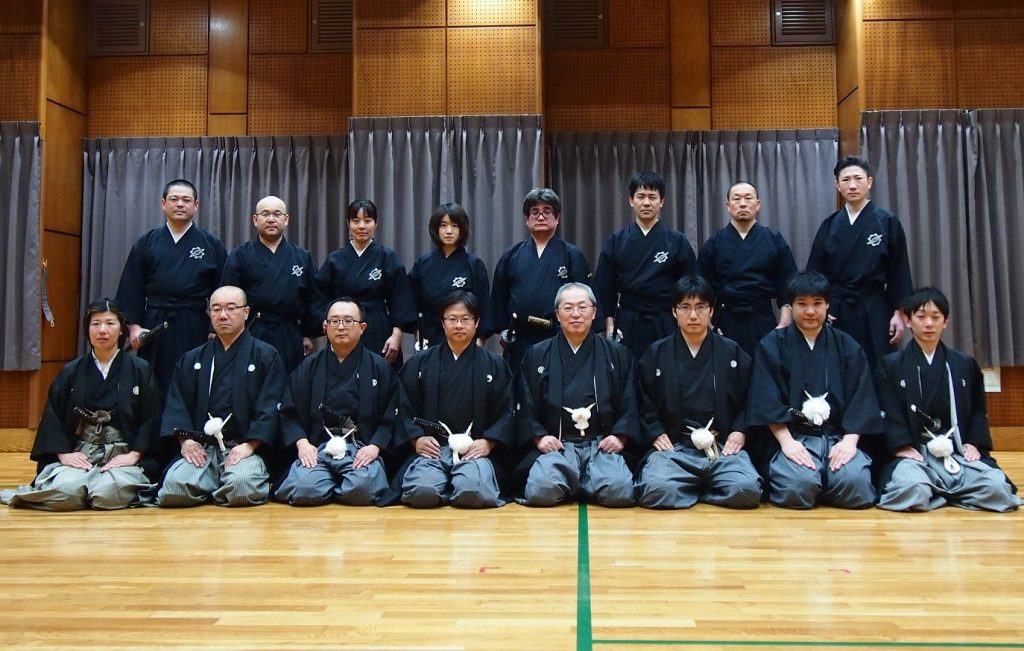
Iaido Kumitachi Tameshigiri
The term Mugai-Ryū is written in Japanese characters (Kanji) 無外流 . 無 (mu) means nothing, 外 (gai) means outside or outside and 流 (ryū) means school or style among other things. In Mugai-Ryu Iaido, therefore, there will be primarily no reaction to recognize his intention.
Iaido (The Art of Sword Drawing)
居 i or iru stands for be present, physically as mentally 合 ai means fit, fit, agree, in this context as much as immediate action and reaction, whenever it is necessary 道 dō is the way or even the principle.
In Japan the style is assigned to the Koryū (classical Bujutsu discipline), which means in German in approximately old school. The name of the style Mugai Ryu was inspired by the following poem that Tsuji Gettan Sukemochi, the founder of our style got from his Zen teacher Sekitan:
„Ippo jitsu mugai, Kenkon toku ittei Suimo hono mitsu Dochaku soku kosei“ – The free translation of the quotation reads „There is nothing but the one truth, it is all-encompassing and everlasting, the feather carried by the wind is this grasping to experience harmony, amidst confusion, means enlightenment“.
Later Mugai also became the spelling name of Tsuji Gettan Sukemochi.
At a time when there was no clear direction, the style of Mugai-Ryū separated into different traditions (Edo-Mugai-Ryū and Himeji-Mugai-Ryū), which at times resulted in the loss of some techniques and the general training teachings, which were then compiled again. Today there are various directions of Mugai-Ryu Iaido.
The term Mugai-Ryū refers only to the fighting style, while the schools have their own names, such as Keizankai or Kakushinkai.
Japanese Koryu Sword Schools
When Japanese fencing systems were created, the special features of the Katana and Tachi had to be taken into account. Thus the technique of the Ryu often differs seriously from the Italian and French fencing schools, of European origin. Thus one specialized in Europe on heavy blows and later stings. The Katana is approx. 1 m long and slightly curved, with a weight of about 750-1200g heavy blows are difficult. With the Katana cutting and pulling movements are carried out. Compared to the European system, speed and precision are much more important during training.
Mugai Ryu Kenpō
The school has only Kenjutsu in its curriculum since it has adopted the iaijutsu school Jikyō-ryū (自 鏡 流) as a supplement, and it has a strong link to Zen since Gettan believes that „sword and Zen are the path of the“ same truth „.
The curriculum of Mugairyū consists of 10 techniques with a long sword and 3 techniques with a short sword. 3] Later also the techniques for duels (Shiaiguchi 試 合口) were added.
An analysis of the techniques available in Mugai-ryū shows a clear influence of Ittō-ryū, so that either the Yamaguchi-ryū studied by Tsuji was a derivative of Ittō-ryū or Itō Taizen was a master of this style.
The small number of techniques in Mugai-ryū reflects the philosophy of Tsuji Gettan with respect to the actual effectiveness of the techniques as well as his methods of teaching and classification.
